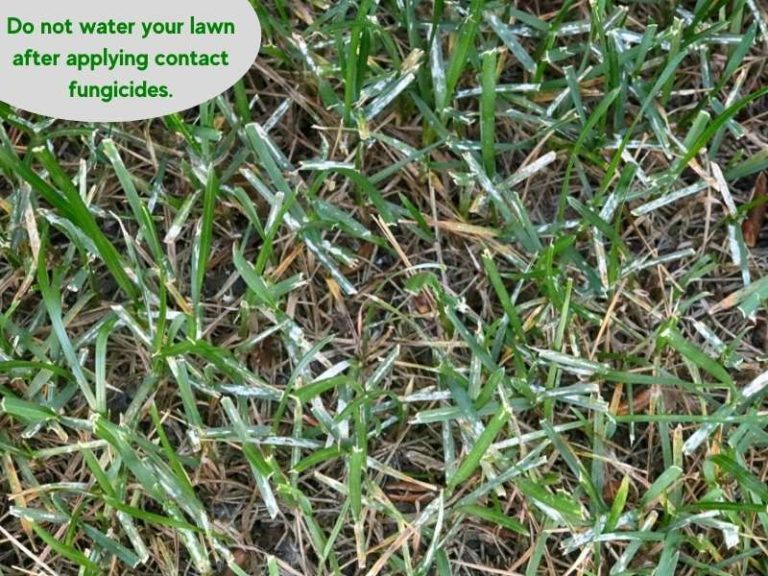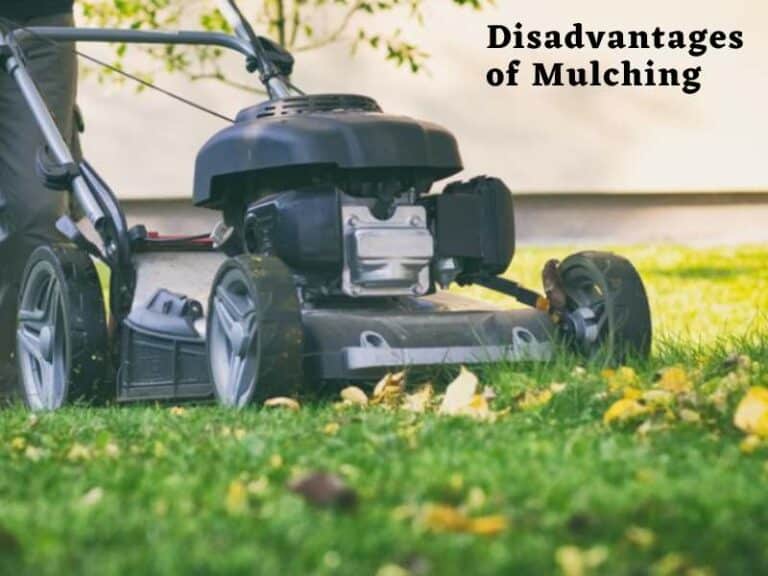How Many Decibels Is a Lawn Mower?
Lawn mower noise can cause hearing damage and disturbance to neighbors. Loud noises from your lawn mower can be a sign of lawn mower trouble and should be corrected. There are ways to reduce mower noise. But first, the best preventative method is always to wear hearing protection equipment.
A normal conversation will set off a noise reader at about 60 dB. A lawn mower is 30 levels above that, at 90 dB. However, it can get to 110 dB if the lawn mower is super noisy.
You don’t want to bother your neighbors or end up with impaired hearing. We’ll show you how to know when loud is too loud and how to protect yourself against loud mower noises.
What is an acceptable (dB) noise level?
An acceptable noise level is the maximum decibels to which one can safely be exposed. The accepted noise level is usually about 85 dB. You’re at a high risk of suffering hearing damage if you’re exposed to noise levels exceeding this decibel rating.
According to the National Institute for Occupational Safety and Health (NIOSH), the maximum amount of time that you can be exposed to high decibel levels before hearing damage occurs reduces as the noise level increases, as follows:
| Noise Level | Maximum time |
| 88 dB | 4 hours |
| 91 dB | 2 hours |
| 94 dB | 1 hour |
| 97 dB | 30 minutes |
| 100 dB | 15 minutes |
| 103 dB | 7½ minutes |
Note: For every 3 Db increase, the maximum acceptable exposure time reduces by half.
When using power equipment with noise levels above 85 dB, ensure you wear ear protection equipment. Employers are required by law under the Occupational Safety and Health Administration (OSHA), to enact a hearing conservation program for staff members exposed to noise levels exceeding 85 dB.
How many decibels is a lawn mower?
Lawn mower decibels vary depending on the type of mower. Gas-powered riding lawn mowers have an average noise rating of 90-decibels (dB). Meanwhile, push lawn mowers typically have a decibel rating ranging from the high 70s to the low 80s, close to the acceptable noise threshold of 85 dB.
Electric lawn mowers are quieter, with some battery-powered, electric push mowers having decibel ratings as low as 56 dB. However, the quietest of all mowers are manual push reel lawn mowers, whose average noise rating is 55 dB.
There are various tools that you can use to determine the noise level of your lawn mower. These include sound level gauges, octave band analyzers, and noise dosimeters. The National Institute for Occupational Safety and Health (NIOSH), also provides a noise measuring app that you can use to measure noise levels if you have an iOS-based device.
How many decibels is lawn mower too loud for neighbors?
Any power equipment, including lawn mowers, producing a noise level exceeding 85dB is considered too loud aUnderecially if your houses are close to each other.
A brick wall separating your space from the neighbor’s space can only reduce up to 40 dB of noise. Thus your 90dB will still sound like a nuisance to the neighbor next door.
Why is lawn mower equipment so loud?
Self-Propelled and Push Lawn Mower are loud by design. However, your lawn mower could be excessively loud due to problem factors such as a low-quality or faulty muffler, noisy blades, and loose components.
Damaged muffler
One of the most common reasons for overly noisy lawn mowers is faulty mufflers. The muffler reduces noise inside the mower’s exhaust system. When the muffler cracks or the gasket seal between it and the exhaust pipe is worn out, it causes engine noise cancellation failure. As a result, the mower’s engine becomes louder. Its good to know the type of gas the lawn mowers use to avoid damages as a result of poor quality gas and oil.
Low-quality muffler
In some cases, the mower doesn’t gradually become louder. Instead, it produces excessively loud noises from the get-go. If your new mower is too loud from the first time you use it, it’s likely fitted with a cheap, low-quality muffler.
Rogue lawn mower manufacturers deliberately fit their mower engines with cheap absorptive mufflers to cut manufacturing costs and boost power efficiency. However, this type of muffler has poor gas flow restriction, which results in a noisy engine.
Noisy cutting deck
Most of the noise a lawn mower produces comes from the contact between the mower blades and grass or rocks in the lawn or the rattling vibrations of the blades as they spin. Your mower can also become noisier if there’s a buildup of debris below the deck.
Read More: Are Lawn Mower Blades Reverse Threaded?
Loose screws
Lawn mower fasteners can become loose over time as you use the machine more. As the engine’s vibrations are transferred throughout the mower, loose screws on the mower’s blade assembly and body amplify these vibrations into loud rattling sounds that add to the noise from the already loud engine.
Others lawn mower problems that may not have been addressed can also result to a major problems. Ensure you fix the lawn mower problems once they occur and avoid using it since it may sound more loud.
Here are some more issue to fixthat may may make lawn mower more loud:
- Lawn Mower sputtering causes and fixes.
- Lawn Mower Ignition Switch Problems and fixes.
- Bad Boy Mower Problems and fixes.
How many decibels is too loud?
Any noise above 70dB over an extended period is too loud for you. Noise closer to 120dB will do severe damage to your hearing. You can tell that the lawnmower decibel is too high if you experience the following while operating it or after using it for a prolonged time.
- Your ears start to ring or hum.
- You have to shout for someone standing only a few feet away to hear you clearly.
- You suffer short-term hearing loss after work.
- Softer sounds seem muffled after you power off the mower.
Can I reduce lawn mower noise?
Mowers are noisy by design, with most having noise ratings of 80-90 dB. However, anything close to 100 dB or more could indicate mower problems. You can install noise-reducing mats under the deck, fix or replace the muffler, and tighten all the loose screws to reduce lawnmower noise.
Install sound-deadeners on the deck.
Installing sound-deadening material underneath the deck is a great way to lower mower noise coming from the deck or the spinning blades below it. The sound-deadening material is adhesive mats that stick to the underside of the deck. They add mass to the deck and dampen the extra noise coming from the blade assembly.
Note: Ensure you scrape out any debris before installing a sound-deadening mat below your mower. The clean debris-free platform improves the adhesion of the mat to the deck.
Repair or replace the muffler
If your worn-out muffler allows sound to escape, replace it with a new one. Follow the steps elaborated below to correctly replace this mower component:
- Once the lawn mower cools down, unfasten the exhaust pipe and remove the exhaust.
- Unfasten the mounting bolts and take out the muffler.
- Check the muffler all the way through to find out if it has any cracks. Also, check if the gasket seal is leaking.
- Use an adhesive gap sealer product to close the gaps for hairline cracks. The best solution for deeper cracks is to replace the muffler with a new one.
- Finally, install a replacement gasket if you have a leaky gasket seal.
Tighten loose bolts and screws.
You’ll have to access the inner components of the mower to access some of the loose screws. Inspect all the bolts and screws and tighten those that are loose to lower lawnmower noise caused by loose fasteners. Consider getting the help of a power tool repair technician if you’re not too familiar with the inner workings of a lawnmower.
The best ear protection from lawn mower noise
The best items you can use for ear protection against lawnmower noise include standard ear muffs, Bluetooth ear muffs, and foam earplugs.
Standard ear muffs
Ear muffs are ear protectors with a headphone-type design. They go over the user’s head and cover their ears to reduce the noise levels while using noisy tools. Basic earmuffs are affordable and still provide decent hearing protection, provided you don’t use your mower too frequently.
Premium-quality, standard ear muffs, on the other hand, cost more but offer more noise reduction. Such high-end ear muffs typically have a better ergonomic design, allowing the user to keep them on comfortably for hours.
Bluetooth-enabled ear muffs
Work time doesn’t have to be boring. And that’s where Bluetooth earmuffs come in. These hearing protectors allow users to safeguard themselves from lawn mower noise while simultaneously listening to music from their devices via the Bluetooth feature.
Note: Most Bluetooth-enabled earmuffs also have a microphone component that enables you to pick calls directly from the earmuffs without disconnecting the Bluetooth.
Foam earplugs
Foam earplugs are designed to be rolled and inserted into the earholes. Although they seem like a basic form of hearing protection, they still do a good job blocking mower noise from reaching your eardrums.
Take note, though. Foam earplugs may fall off once in a while, forcing you to temporarily stop your work, put them back on and get back into your rhythm.
References
- United States Department of Labor- Occupational Health and safety administration (OSHA): Occupational Noise Exposure
- University of Florida- Hearing Conservation Program (HCP): Noise Levels for Common Equipment






